Disclaimer: As an Amazon Associate I earn from qualifying purchases. Therefore, we may collect a share of sales from the links on this page, at no extra cost to you!
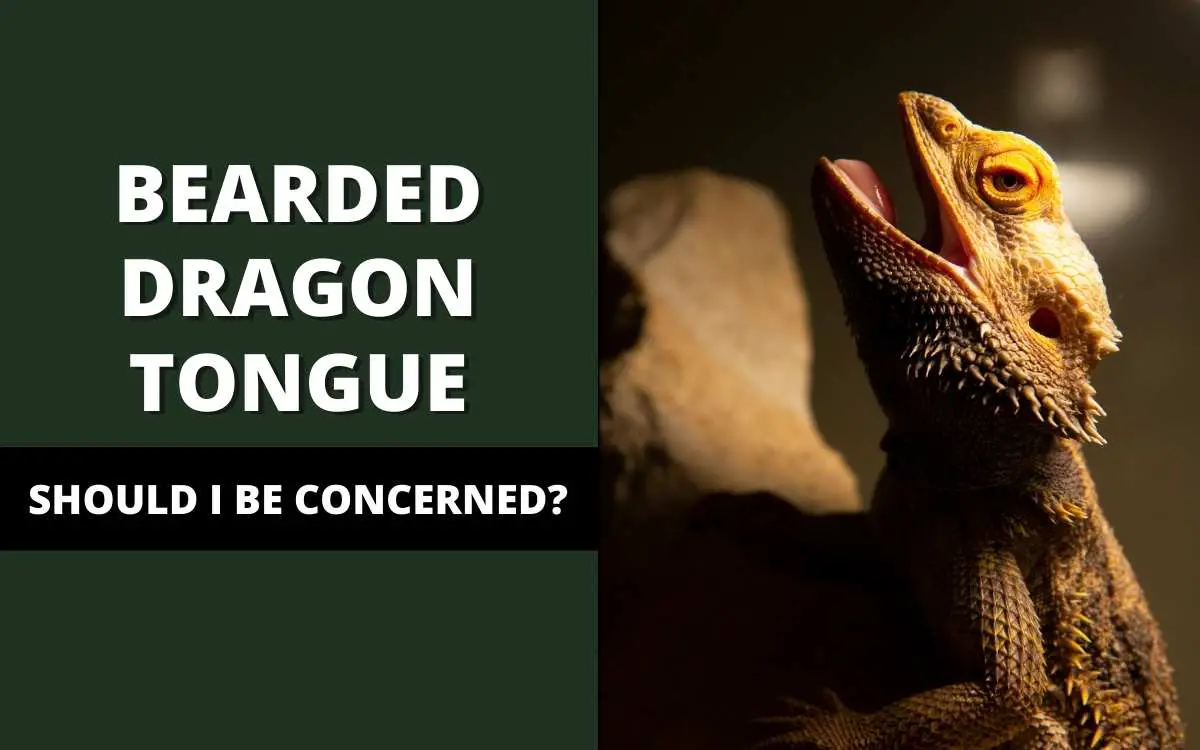
Bearded Dragon Tongue (Normal vs. Abnormal Beardie Tongues)
The bearded dragon tongue – cute to us humans but deadly to those poor crickets!
Anyways, there are a lot of questions surrounding the glorious bearded dragon tongue.
Some of these commonly asked questions include:
- What does a normal bearded dragon tongue look like?
- What if the tip of my bearded dragon’s tongue is white?
- Why is my bearded dragon sticking their tongue out?
- What does it mean when a bearded dragon licks you?
Therefore, in an effort to relieve some of these burning questions, we’ve decided to answer all of them in this nice little guide.
So, let’s jump right into our bearded dragon tongue guide!
Table of Contents
Bearded Dragon White Tongue – Should I Be Concerned?
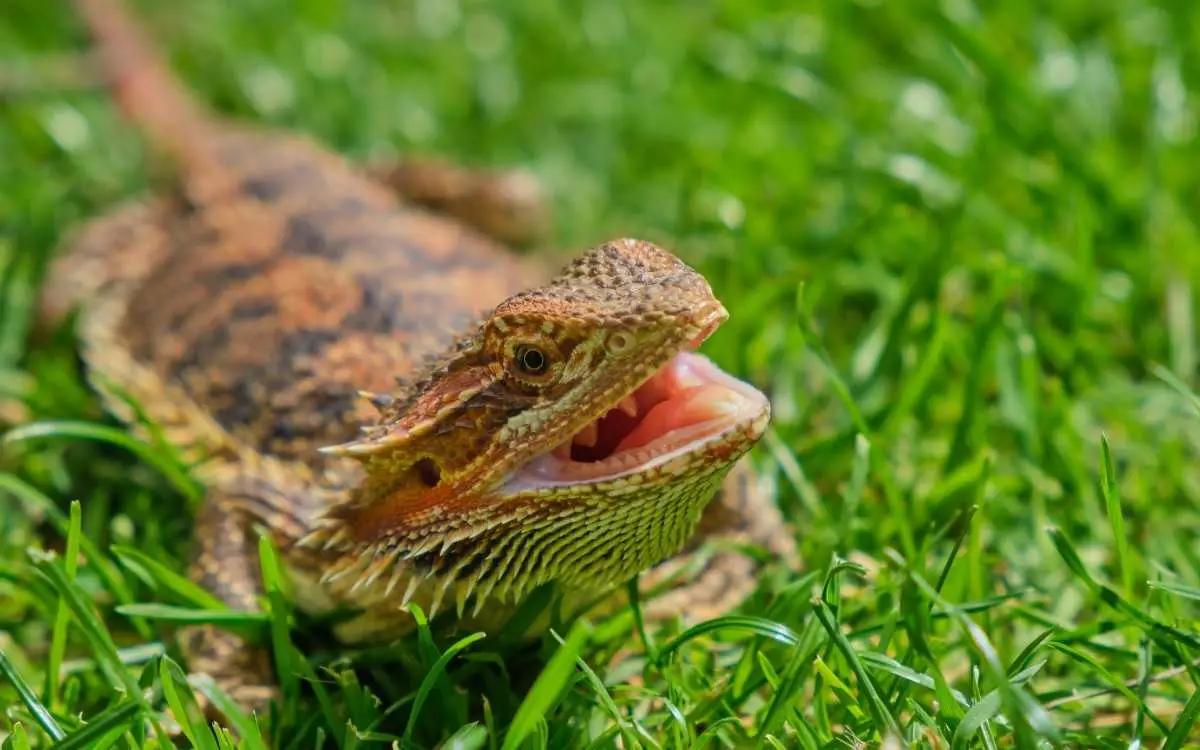
So, a lot of people become concerned when they notice their bearded dragon has a white tongue – or at least, white at the tip of their tongue.
However, this is completely normal. The tip of a bearded dragon’s tongue is almost always light pink, white, or yellow. This part of the tongue is light and sticky due to an evolutionary trait that helps bearded dragons capture prey more easily. Basically, the prey gets stuck on their tongues, and boom – your beardie just made its next meal!
So, should you be concerned if your bearded dragon’s tongue is white, yellow, or light pink? No, it’s completely normal!
Below are some images of what a normal bearded dragon tongue looks like. You’ll notice that almost all of these bearded dragons have a slightly different color on the tip of their tongue – whether that be yellow, white, or light pink.
Bearded Dragon Discolored Mouth?
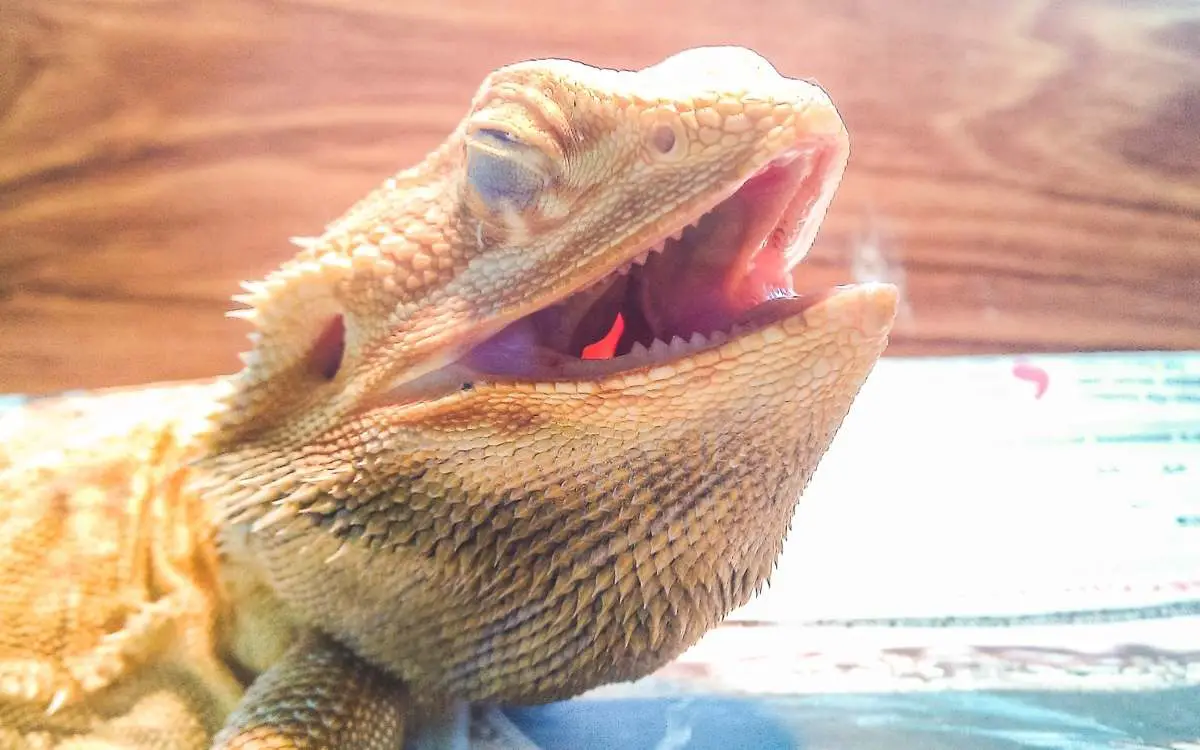
On the other hand, you may want to pay attention to the entirety of your bearded dragon’s mouth. If the inside of your bearded dragon’s mouth is completely white or grey, this may be a sign of an underlying health problem.
Some health conditions associated with these symptoms include anemia, mouth rot, a respiratory tract infection, parasites, and more. If this is the case, it’s imperative that you reach out to your local veterinarian and ask for guidance!
Keep in mind, that behaviors such as your bearded dragon keeping its mouth open or sticking its tongue out are completely normal and should not be cause for concern.
Furthermore, if your bearded dragon gets pale around the mouth area (right outside of its mouth), this is typically a sign that your bearded dragon is about to shed.
Why is My Bearded Dragon Sticking Their Tongue Out?
Bearded dragons stick their tongues out for a multitude of different reasons. Some of these reasons include regulating their body temperature, examining their surroundings, and catching prey.
Let’s dive deeper into the many reasons why your bearded dragon’s tongue may be out.
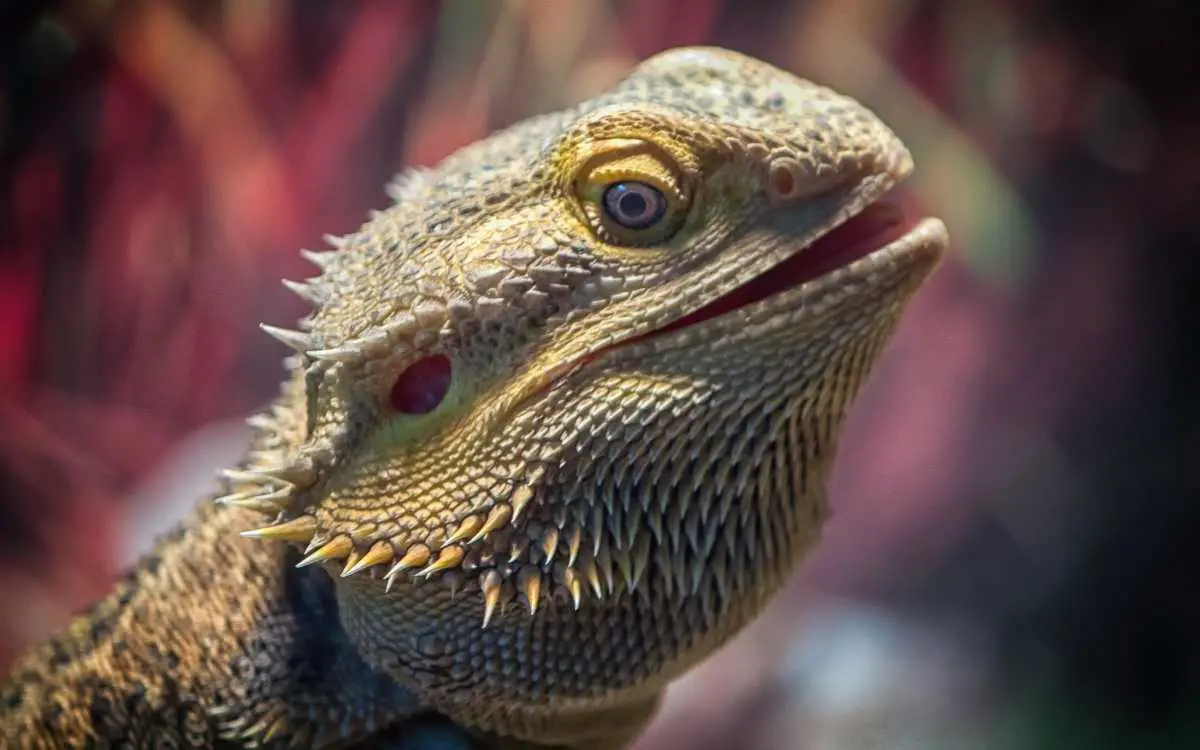
Regulating Their Body Temperature
If your bearded dragon’s mouth is open and its tongue is exposed, this is a sign that your beardie is simply regulating its body temperature.
This common behavior is referred to as “gaping”. Gaping is a way for bearded dragons to regulate their body temperature when they are basking.
Basically, once your bearded dragon has reached its ideal temperature, it will open its mouth to release heat. If bearded dragons didn’t gape, they would become overheated when basking.
Examining Their Surroundings
Additionally, some bearded dragons will stick their tongue out in order to examine their surroundings. Like most reptiles, bearded dragons are equipped with scent receptors within their tongues. If you place a new hide or log in your bearded dragon’s enclosure and they start to flick their tongue out, this is probably a sign that they are simply checking things out.
This is a common behavior in snakes as well. You’ve probably seen a snake flick its tongue up and down when slithering around. This is a common behavior in reptiles and it’s just a way for them to familiarize themselves with new surroundings. No need to worry here!
Catching Prey
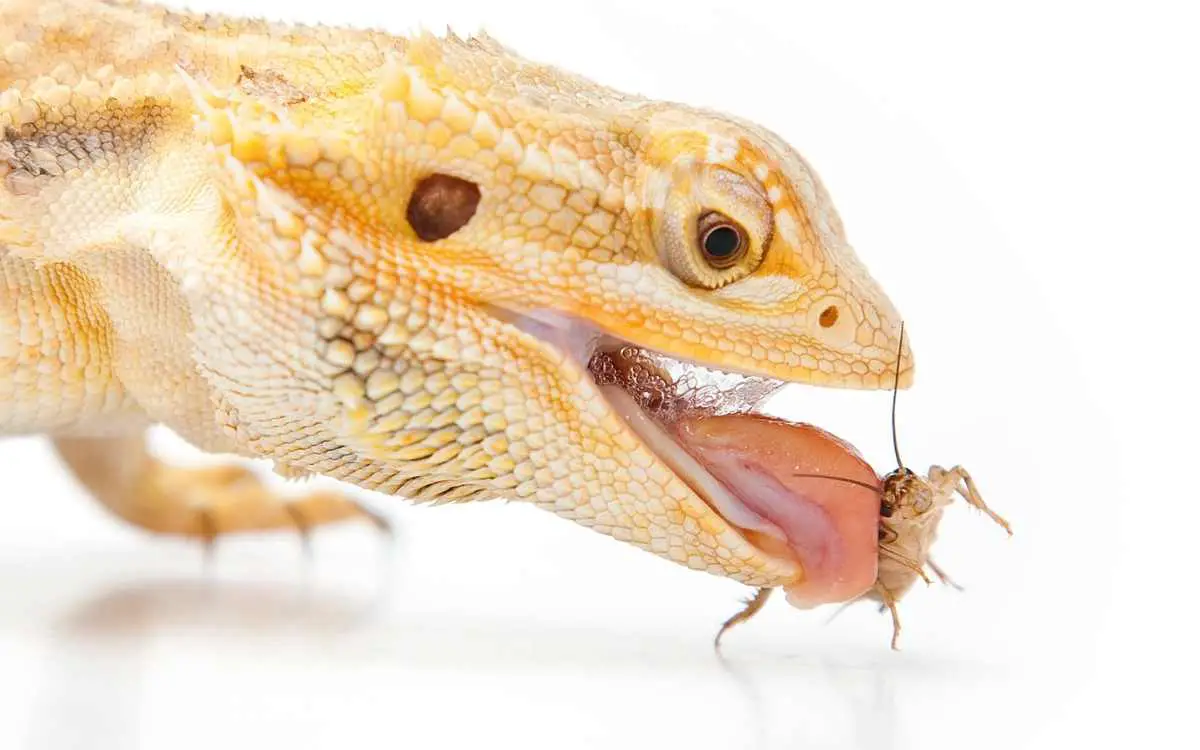
So, you’ve probably seen your bearded dragon eat a cricket? If so, how did they capture it?
Ding Ding Ding – correct! They caught the cricket with their tongue!
Bearded dragons have a very sticky layer of saliva that rests on their tongue. This gooey layer enables bearded dragons to capture their prey.
If you’ve ever seen a chameleon eat, you’d know exactly how this process works. Basically, when a chameleon sees a fly or other bug, it will sneak up to them and shoot its tongue out at it. The bug will get stuck to the tongue of the chameleon and it will then retract its tongue back into its mouth. This is exactly how bearded dragons do it – just with a much smaller tongue!
Metabolic Bone Disease (MBD)
Although this is an extremely uncommon reason why a bearded dragon would have its tongue out – it’s not unheard of. Basically, if your bearded dragon suffers from metabolic bone disease (MBD for short), it may leave its mouth open exposing the tongue.
MBD affects the bone structure of your bearded dragon. As a result, the bones in the jaw may become softened and flexible. Because of this, your bearded dragon may not be able to close its jaw, and its tongue may hang out as a result.
However, as we mentioned, this is a very rare symptom of MBD. More common symptoms associated with MBD include limping, bowed legs, lumps all over the body, difficulty walking and moving, and decreased appetite.
If you are worried your bearded dragon may suffer from metabolic bone disease, it’s important that you seek treatment from a licensed reptile veterinarian.
Let’s Wrap It Up
As you can tell, there’s a lot of information revolving around the bearded dragon tongue. Beardies use their tongues for a variety of different reasons, and they serve many different purposes. They can use their tongues to regulate their body temperature, capture prey, and examine their surroundings.
Furthermore, we learned that bearded dragons don’t usually have completely pink tongues. Oftentimes, they will have white or yellow at the tip of their tongue – but this is completely normal and assists them in capturing their prey.
So, fellow bearded dragon owners – we hope you learned something new today! Check out our other articles to learn more amazing facts about bearded dragons and other scaly creatures!

I like the helpful information you provide in your articles. -Tony Meir Gally
Muchos Gracias for your blog article. Thanks Again. Fantastic. -Anna Nicole